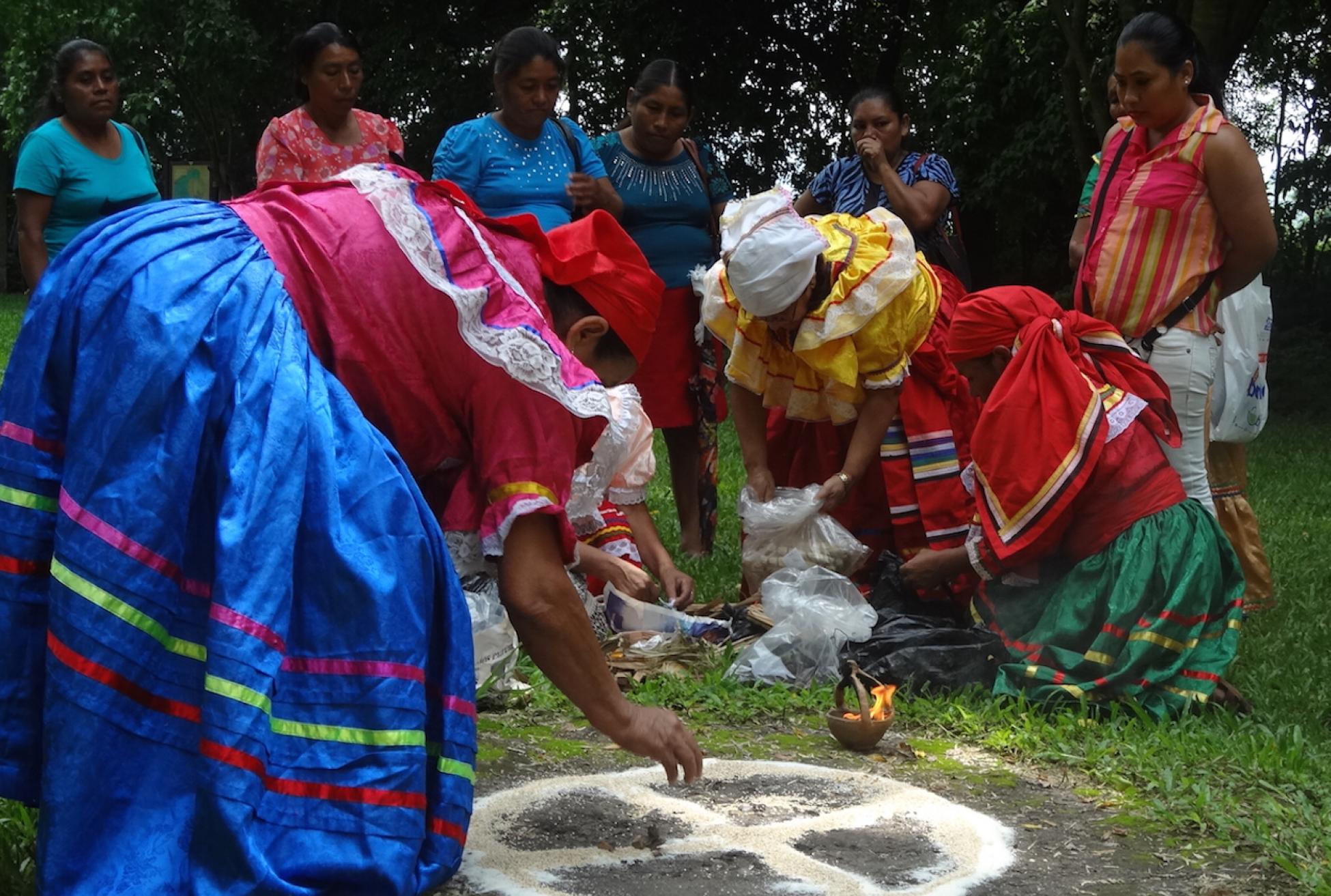With morning mist still hanging in the air, I made my way to Copan’s park grounds. In the distance, the ancient Mayan ruins were just visible, shrouded in a light haze. The early wakeup time was worth—I was about to witness a special ceremony.
Not just anyone can host an event at Copan's famous archaeological site—it is sacred ground for the Maya Chorti nation, who have long struggled to secure a cultural right to perform activities here. Today’s event—which I had been invited to help organize—was going to be hosted by the women’s organization of the Maya Chorti, Consejera De Mujeres Maya Chorti.
I didn’t have to wait long for the others to arrive. One-by-one, the women began making their way towards the ruins. In the shadow of the ancient Mayan temples, around 60 people gathered to watch. Four priestesses entered. Dressed in traditional Mayan cloth, they outlined a sacred circle on the ground, complete with four cardinal points and a fire pit at the centre. (Representing the unity of the original nations of the four corners is an important aspect of the Mayan Cosmo vision, signifying a connection to the nations from around the world, unity, and peace for the common good.)
Working together for the common good
The women of the Maya Chorti nation recognize the initiation of any social justice projects with a ceremony—invoking the name of the creator and the ancestors to assist in the tasks ahead is an important cultural aspect of the Maya nation.
Likewise, this morning was particularly important, as it marked a new initiative to promote indigenous women’s rights in the area.
Unfortunately, the new program doesn’t take into account the beneficiaries’ perspectives—including those towards women’s rights. Simply put, the Maya Chorti cultural heritage was not considered. While the program was designed by international NGOs in coordination with the Honduran government, it’s fallen short of incorporating the beneficiaries’ cultural norms. For example, cultural ceremonies and the role of priestesses have been left out of the project. (Any development projects focused on indigenous people needs to incorporate the perspectives of each nation/community/region involved. This is an essential aspect that unfortunately escapes many development agencies.)
This lack of consultation is a constant cause of frustration for the Maya Chorti Women leadership, who wanted to make a point. The ceremony was an opportunity to assert their culture and perspectives within the framework of the women’s rights movement.
A world full of life
As the women began to lead the gathered men and women in prayer, I was drawn to the light and heat of the sacred fire. Representing truth, the fire burns all impurity with its force. For me, in this most sacred of places, amidst the Mayan Ruins, the symbolism wasn’t lost on me. On their traditional ancestral land, the Mayan women were announcing their continued presence and their steadfastness, for the ancestors and visitors to behold.
We called upon the ancestors and invited them to assist in our fight for indigenous peoples’ rights; and asked for their guidance and wisdom in our struggles against injustice and poverty. We also thanked the planet, whom the priestesses believe is a conscious entity who cares for all living beings who come from Her essence.
We need the help and the wisdom of indigenous people to help us remember our connectivity to the land.
With each recitation, we knelt and planted our foreheads to the moist earth, symbolizing an eternal connection to the planet and a direct communication with Her. A strong sense of calm and peace came over me. Being on my knees, with the scent of the fresh earth and smoke, and hearing the living forest around me created a momentary bliss that was at once humbling and liberating. The Earth is a living entity; a scared site. It’s not an inanimate object. The world in the Maya Cosmo vision is full of life, not death.
As the fire burned down, we made our last silent prayers to the ancestors before throwing sesame seeds and blades and grass into the flames. With each deposit, the fire burned brilliantly, hearing us and responding to our offering.
Lighting the fire within
Being able to help light the sacred fire in one of the most important cultural and religious sites of the Ancient Maya civilization was an honour I’ll never forget. The Maya Chorti Women had placed a great deal of trust in me by inviting me to help coordinate the ceremony. I will keep their trust.
To participate shoulder-to-shoulder with the community is important for me. Why? Because I am not here to save anyone I am here to learn to be in harmony and in solidarity. For this opportunity to learn, I am truly thankful. The fire in our minds and hearts continues to burn brightly. I am more determined than ever to help defend the dignity and the fundamental rights of the community.
It is exactly this types of ceremony that reminds me of my purpose here. We need the help and the wisdom of indigenous people to help us remember our connectivity to the land and to help us remember how to take care of it. When we discriminate and systematically destroy our indigenous heritage, we are effectively destroying our own planet and the ecosystems that thrive here.

